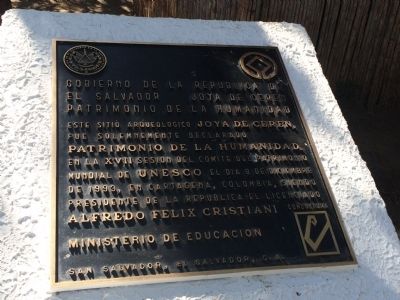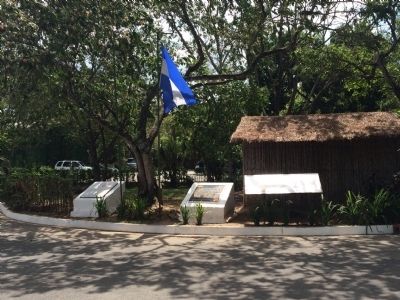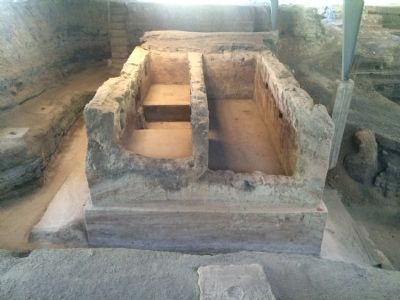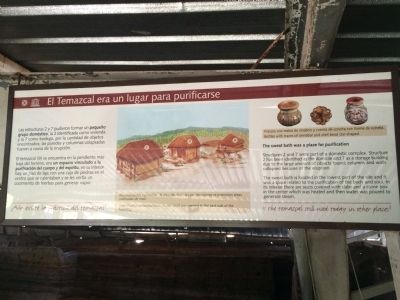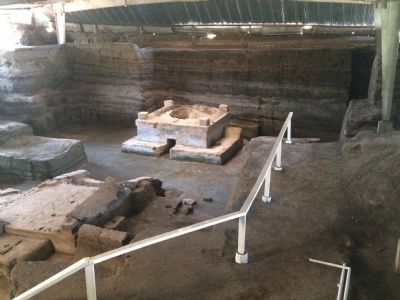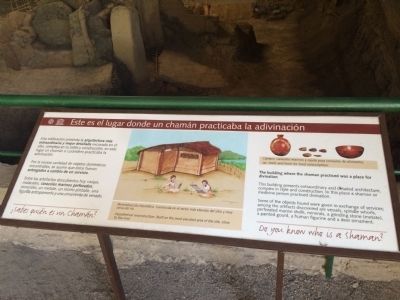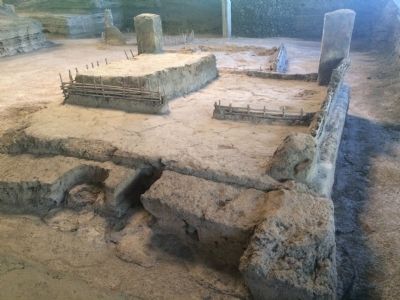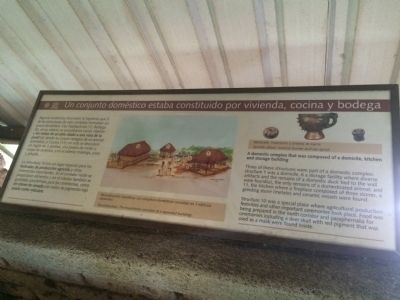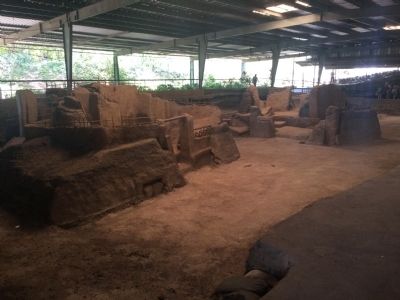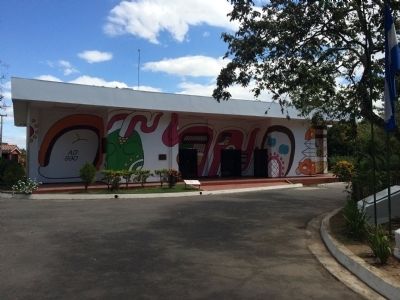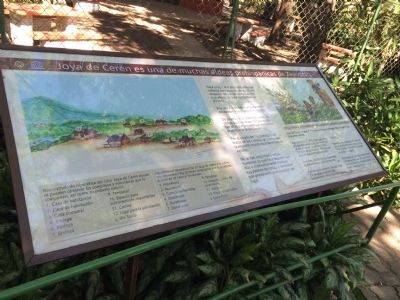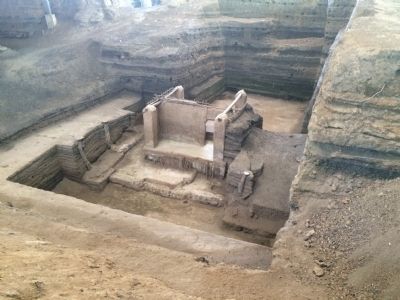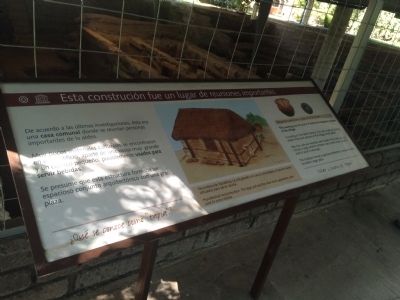Near San Juan Opico, La Libertad, El Salvador — Central America (West Coast)
Joya de Cerén
Joya de Cerén
Patrimonio de la Humanidad
Este sitio arqueológico Joya de Cerén, fue solemnemente declarado Patrimonio de la Humanidad en la XVII sesión del Comité del Patrimonio Mundial de UNESCO el día 8 de diciembre de 1993, en Cartagena, Colombia, siendo Presidente de la República el Licenciado Alfredo Felix Cristiani.
Ministerio de Educación
San Salvador, El Salvador, C.A.
Government of the Republic of El Salvador
Joya de Cerén
World Heritage Site
This archaeological site Joya de Cerén, was solemnly declared a World Heritage Site in the XVII session of the World Heritage Site Committee of UNESCO on December 8, 1993, in Cartagena, Colombia, under the President of the Republic Alfredo Felix Cristiani.
Ministry of Education
San Salvador, El Salvador, Central America
Seals of El Salvador, UNESCO and CONCULTURA
Erected 1993.
Topics and series. This historical marker is listed in these topic lists: Native Americans • Settlements & Settlers. In addition, it is included in the UNESCO World Heritage Sites series list. A significant historical month for this entry is December 1819.
Location. 13° 49.704′ N, 89° 21.394′ W. Marker is near San Juan Opico, La Libertad. Marker is near the entrance to the archaeological expositions at the Joya de Cerén park. Touch for map. Marker is in this post office area: San Juan Opico, La Libertad 00515, El Salvador. Touch for directions.
Other nearby markers. At least 8 other markers are within 18 kilometers of this marker, measured as the crow flies. The San Salvador Volcano Complex (approx. 4 kilometers away in San Salvador); Abandonment of the San Andrés Archaeological Site (approx. 4.6 kilometers away); Indigo Production at San Andrés (approx. 4.7 kilometers away); San Andrés was an extensive prehispanic settlement (approx. 4.7 kilometers away); San Andrés Archaeological Site (approx. 4.7 kilometers away); Structure 7 at San Andrés Archaeological Site (approx. 4.8 kilometers away); El Boqueron National Park (approx. 13.4 kilometers away); Juan Pablo Duarte (approx. 17.3 kilometers away in San Salvador).
Regarding Joya de Cerén.
Joya de Cerén was a pre-Hispanic farming community that, like Pompeii and Herculaneum in Italy, was buried under an eruption of
the Laguna Caldera volcano c. AD 600. Because of the exceptional condition of the remains, they provide an insight into the daily lives of the Central American populations who worked the land at that time.
The site was discovered during the construction of Government grain-storage silos in 1976, when a clay-built structure was exposed by a bulldozer. Excavations were carried out under the direction of Dr. Paysan D. Sheets (University of Colorado) in 1978 and 1980, but were interrupted by El Salvador's civil war. They were resumed in 1989 and have been continuing since that time.
Credits. This page was last revised on August 8, 2019. It was originally submitted on March 14, 2015, by J. Makali Bruton of Accra, Ghana. This page has been viewed 550 times since then and 14 times this year. Photos: 1, 2, 3, 4, 5, 6, 7, 8, 9, 10, 11, 12, 13. submitted on March 14, 2015, by J. Makali Bruton of Accra, Ghana. • Andrew Ruppenstein was the editor who published this page.
